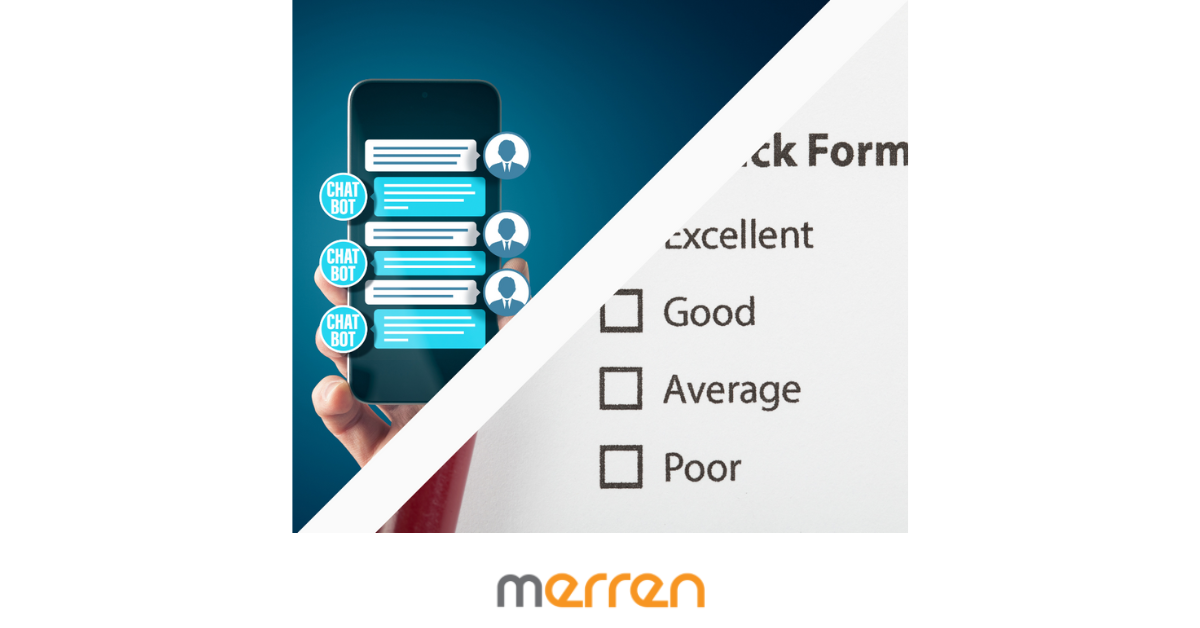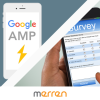Chatbots are a potent tool to collect customer feedback. These have been deployed by various industries all over their applications and websites. Chatbots can be deployed seamlessly, and are conversational in nature. Since this technology gets improved and upgraded over time, it is easy to see why marketers should be using chatbot surveys for their next survey process.
In this blog, we discuss the vantage points of chatbot surveys over traditional methods of seeking customer feedback.
What are chatbot surveys
When it comes to collecting customer feedback, chatbot surveys are a game-changer. Leveraging artificial intelligence and natural language processing, chatbots allow businesses to interact with customers in real-time and gather feedback in a conversational way. Compared to traditional surveys which can be time-consuming and impersonal, chatbot surveys provide a more convenient and personalized experience for customers. Businesses have the ability to ask specific questions and offer tailored responses, resulting in higher response rates and more accurate data. Additionally, chatbot surveys can be conducted on multiple channels such as social media or messaging apps, making them accessible and cost-effective for businesses of all sizes.
These surveys can be easily deployed at touchpoints across industries of e-commerce, FMCG, for automotive industries, BFSI and D2C among the many. They play an important role in capturing fast insights from customers (who are also your end users across industries).
Advantages of having chatbot surveys for customer feedback collection
Here are some of the most useful new age benefits that are worth noting.
Cost effective across industries and departments
Chatbots may not be a direct replacement to human customer representatives but a well trained artificial intelligence can perform many functions that can emulate human interactions. This can save time and resources since a human may not always be available around the clock. Using this feature, departments can have a cost reduction, and allocate resources for other marketing efforts while deploying an efficient bot to interact with customers.
A bot will be at your disposal round the clock
When brands reach a global audience, customers expect them to be available all around the clock. A full time availability may not always be practical when it comes to human resources. This can simply be replaced by a bot that can attend to customers instantly and at the right time. Bots can be deployed for in-app surveys, websites, collecting responses on customer feedback forms to name a few. Bots can also offer special assistance from a drop down menu or immediately redirect users to specific resources.
Faster response times will bring high response rate
Nothing denotes speed than an AI doing its job with great efficiency. When bots deploy customer satisfaction surveys instantly, it becomes easier for respondents. They can answer surveys on the go. Bots are also compatible across brand applications, websites and mobile/ tablet devices / desktop. This will bring in real-time feedback and in-moment responses for faster analysis. Businesses can detect an unhappy customer and immediately attend to close any feedback loop.

Personalization is the key to retain brand loyalty
Customers are more likely to prefer brands that personalize their experience. Bots can offer customized product recommendations, target notifications, and push ads for exclusive deals. This boosts customer retention and engages them by making them feel valued. By analyzing the history of customer purchase, chatbots can highlight necessary products and services which are in line with their interests.
Bots have the potential for scalability
Chatbots can handle large volumes of customer feedback, allowing companies to collect feedback from a larger number of customers and analyze the data more quickly. Implementing chatbots is a practical solution for businesses of all sizes. With the ability to attend to customers instantly, gather real-time feedback, and handle large volumes of data, bots are an efficient way to engage customers and improve brand loyalty. By leveraging this technology, companies can take their customer service and marketing efforts to the next level, ultimately driving growth and success.
Automation becomes a mandatory feature
Manual handling of data is prone to errors. To avoid this issue, automation can immediately happen when organisations work on launching their own chatbot. The seamless working of the chatbot technology can promise a better customer experience throughout every touchpoint. Automation can collect instant data, offer a refreshing user experience and bring a high customer engagement overall.
Best practices to implement chatbot surveys
Implementing chat bot surveys can be an effective way to collect customer feedback. Once fully functional, a lot of this technology can be in a self-service mode. It is advisable to switch to chatbot technology due to its operational efficiency, superior user interface and its ability to handle a massive number of queries. Here are some of the things we can note prior to creating a full-fledged chatbot survey.
Keep it simple and relevant
Customer feedback demands that we keep questions, simple and relevant. Avoid overwhelming them with too many questions or irrelevant information that may discourage their participation. Instead, focus on asking concise and targeted questions that are directly related to their recent interactions with your business. By taking these steps, you can ensure that your chatbot surveys are user-friendly and easy to navigate, leading to more accurate and insightful feedback from your customers.
Provide clear instructions
Clear instructions are essential for any survey especially when the attention spans are dropping. This is also needed if marketers are looking for genuine and authentic customer feedback data to avoid skewed or manipulated responses. To ensure that customers understand the questions and can provide accurate responses, it’s crucial to use simple language and avoid jargon or technical terms.
Offer incentives
Providing incentives is a great way to encourage customers to complete surveys and have a high response rate. Customers are more likely to participate in surveys if they feel that their time and effort are being rewarded. Incentives could be in the form of discounts, freebies, or other rewards that align with your business goals. However, it’s important to ensure that the incentives provided are relevant to the customer and clearly communicated before the survey starts. Offering different incentives for different customer segments can also help increase participation rates. It’s essential to follow through on delivering the promised incentive promptly to maintain customer trust and loyalty.
Test and optimize chatbot surveys
Technical glitches can deter participants. Prior to launching bot surveys to collect customer feedback, it is imperative to test them thoroughly. Testing can also rule out compatibility issues
across devices. Sometimes, the response can also be affected by technical errors. if not the motivations of a respondent. By testing the survey with a small group of users, businesses can identify any issues or challenges customers may encounter while completing the survey. Based on customer feedback, chatbot surveys can be optimized to improve user engagement and completion rates.
Limitations of traditional surveys over chatbot surveys to collect customer feedback
Low response rate, limited insights and inflexibility of bringing respondent data is a problem. To tackle this, we have to understand the limitations of traditional surveys. Here are some important pointers that we can identify.
Marketers cannot use messenger app templates
Bringing up question forms is still a pen-and-paper approach. A lot of the data can be lost if not stored well. If questionnaires are not formulated well, they can be intimidating and far from being conversational. This can discourage respondents from participating or force them to give a skewed response just to finish the survey. Manipulated data cannot help businesses make clear decisions.
To avoid this, messenger based customer feedback forms or bot oriented feedback forms are a new age approach. Traditional surveys lack the modern day approach to bring faster insights.
Browser based interface is slow and outdated
Major brands are still using browser or web based customer feedback system. This directs respondents out of context and into another browser that is not related to the brand or the application. However, this is much slower compared to an AI that can generate and offer a highly responsive and customized survey at a click of a button. Traditional surveys do not have this facility.

Minimal accessibility and not reachable to every customer
Traditional surveys, such as phone surveys or in-mail static surveys, may only be accessible to a certain group of people, such as those with a landline or those who check their mail frequently. Even if they are deployed, most people do not access their emails frequently, especially if they are busy professionals. Added to that, the feedback forms are lengthy and time consuming to fill. Due to this, there is a minimal scope to reach out to a greater number of young respondents who mostly use messenger applications for daily use.
Limited scope of seeking candid feedback
Due to the rigid nature of mediums of traditional surveys, there is no scope to bring candid customer feedback from shoppers or customers. It usually relies on a set of predefined questions and no scope for open ended feedback. Added to this, there is no multimedia support where people can upload and share media rich feedback in traditional surveys. Since human experience cannot be black and white, a chatbot survey can close this limitation gap and be a much better alternative from 2023 onward.
Conclusion
Chat bot feedback forms are a potent way to gather customer data. Trends are passing by and businesses need data to create better marketing strategies. Having real time data is a great way to leverage internal customer support strategies and improve on multiple touchpoints. While analytics is what makes organisations improve on products and services, the AI chatbot can be curated to emulate human conversation. It is highly interactive in nature akin to instant messenger platforms such as Whatsapp and Facebook messenger. Traditional surveys may have certain use but if we want to reach out to customers where they are, chat bot is a wiser offer.
To understand how a bot can supercharge your feedback collection method, read more about the use of AI in surveys collection here.





